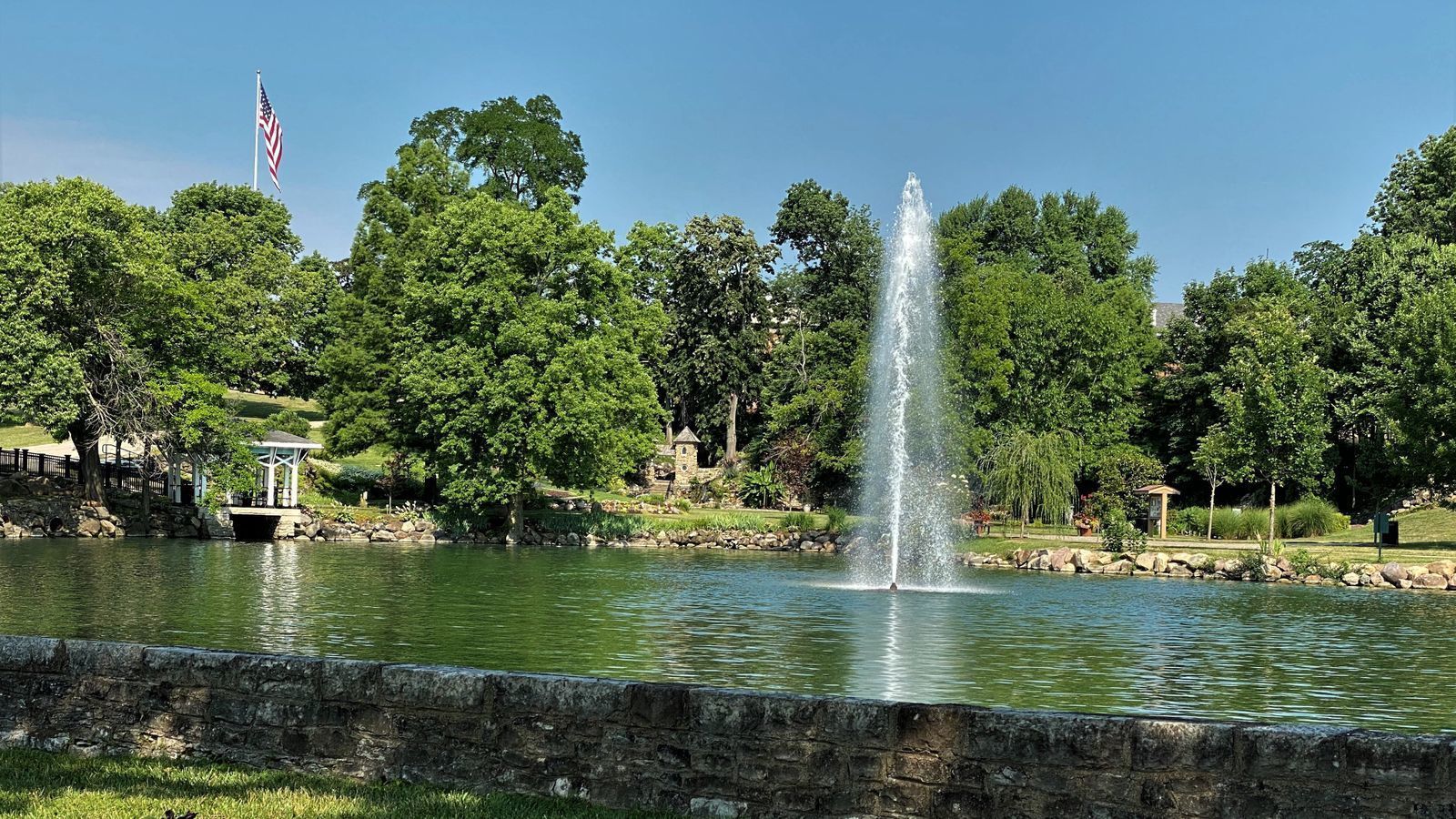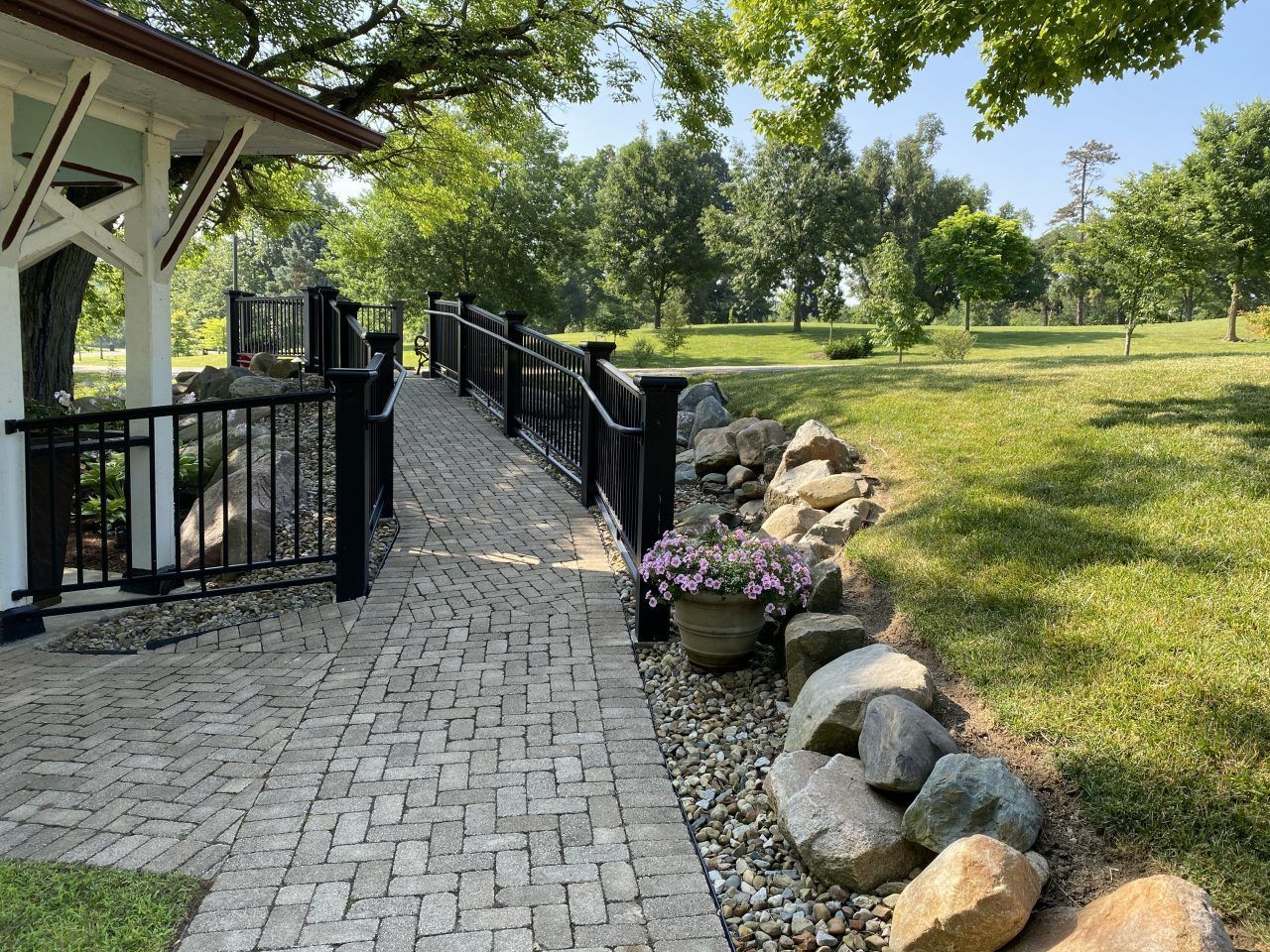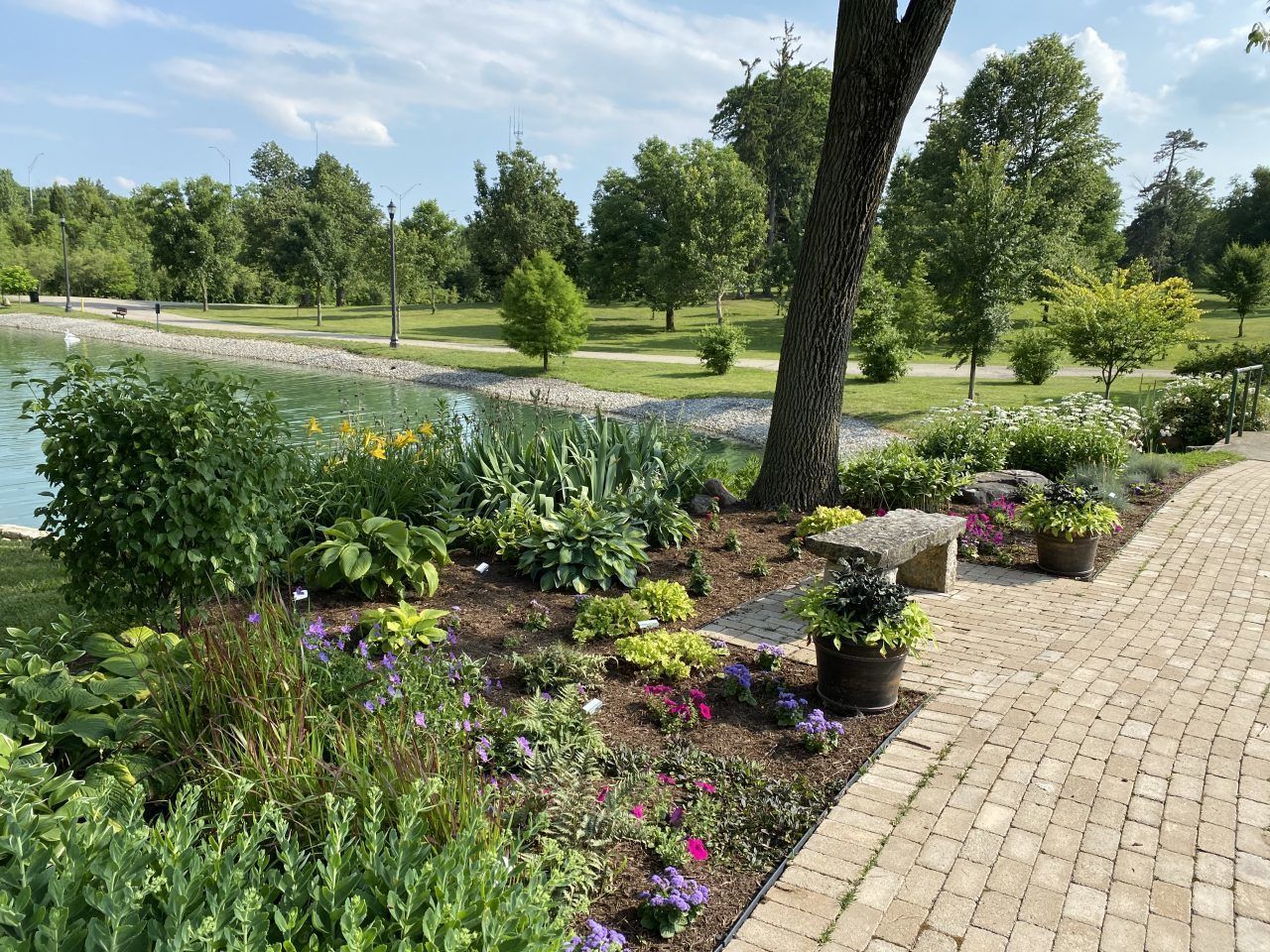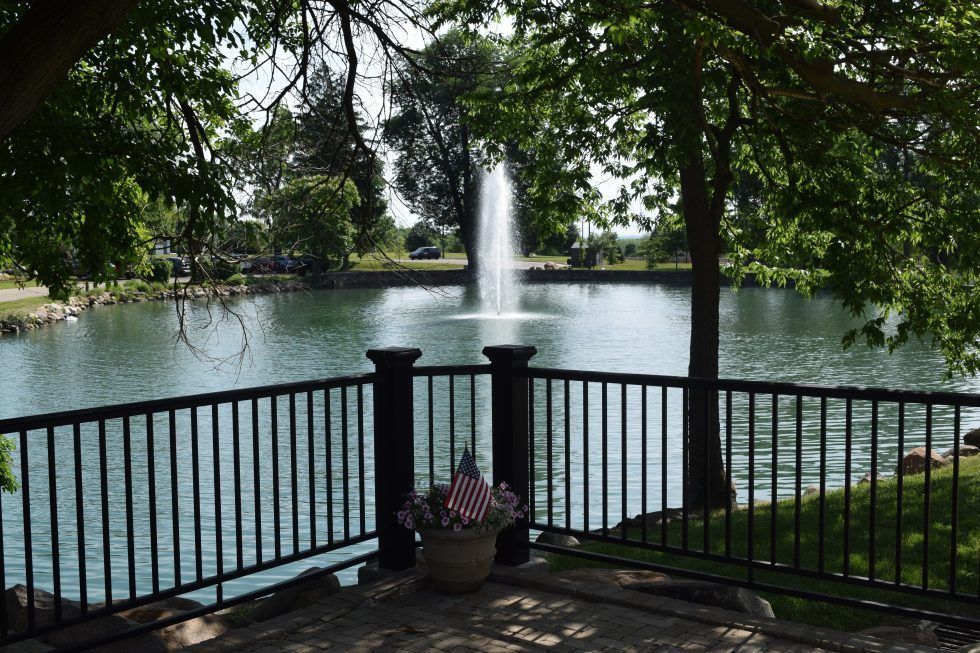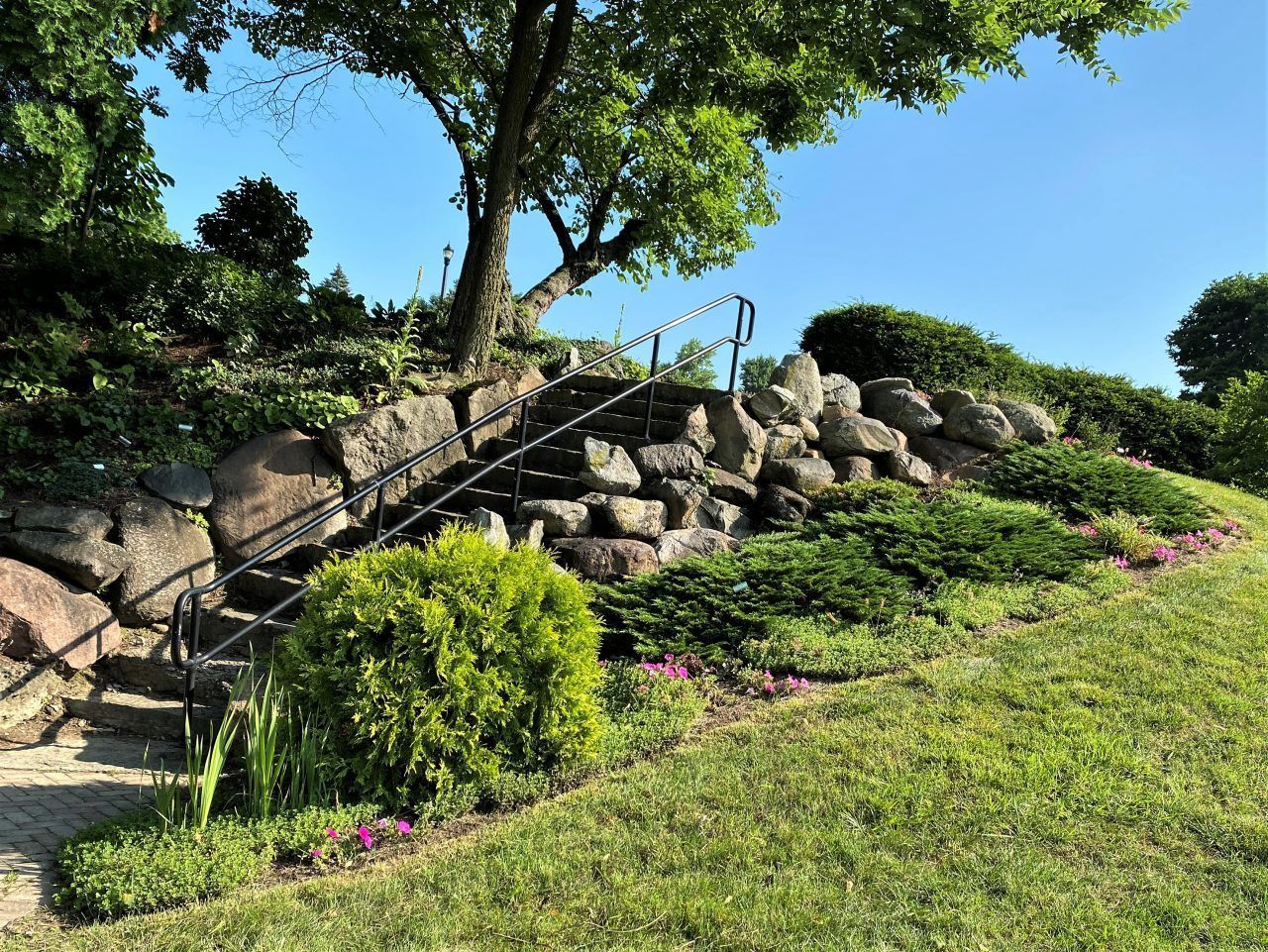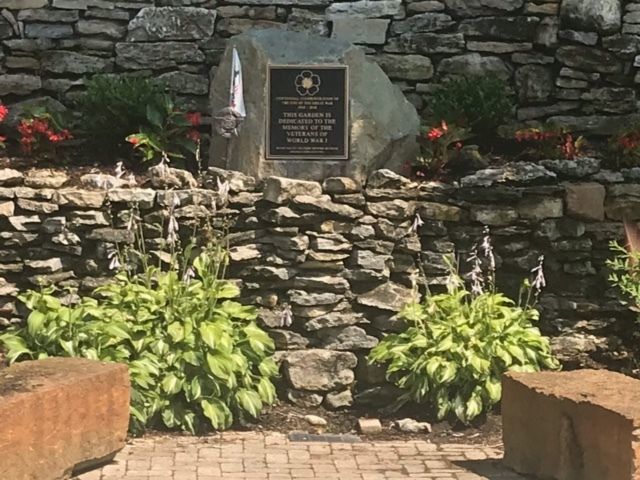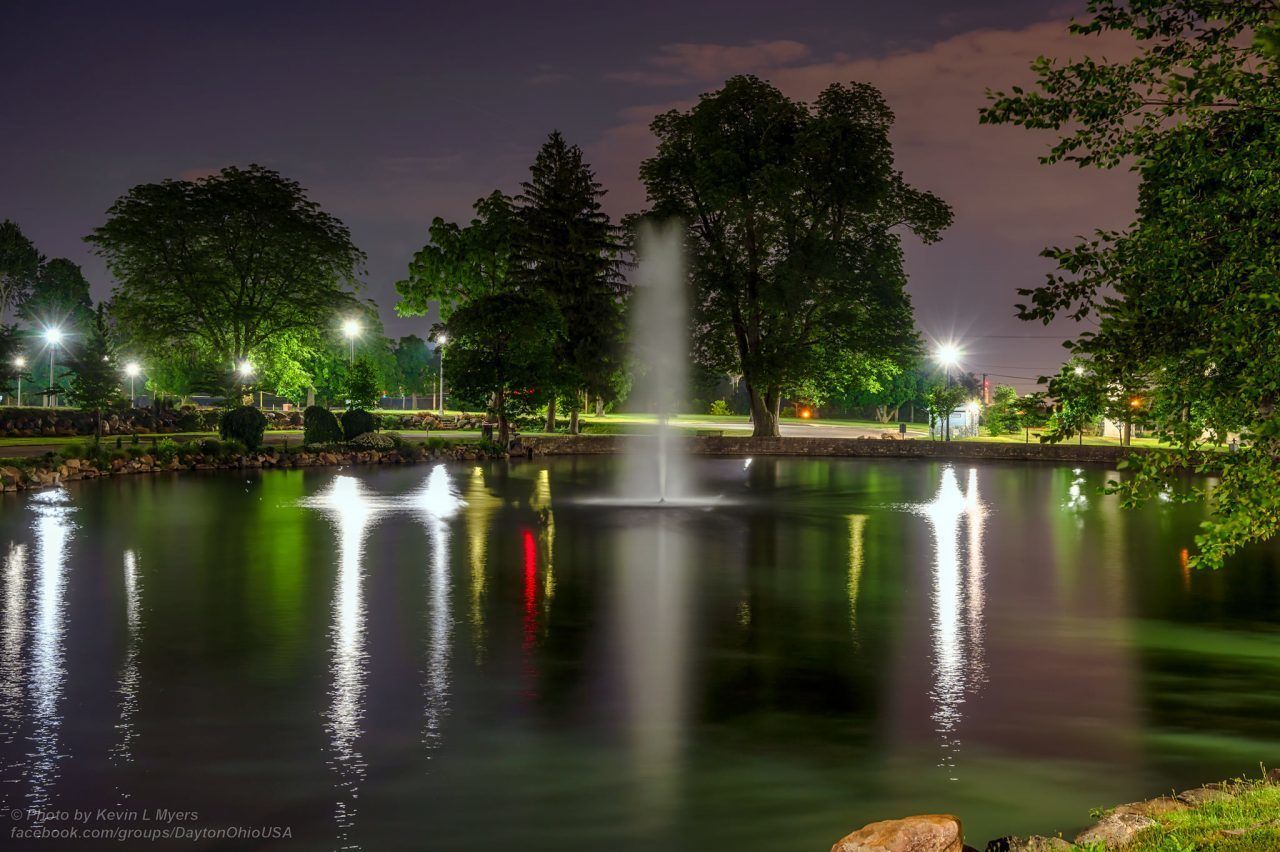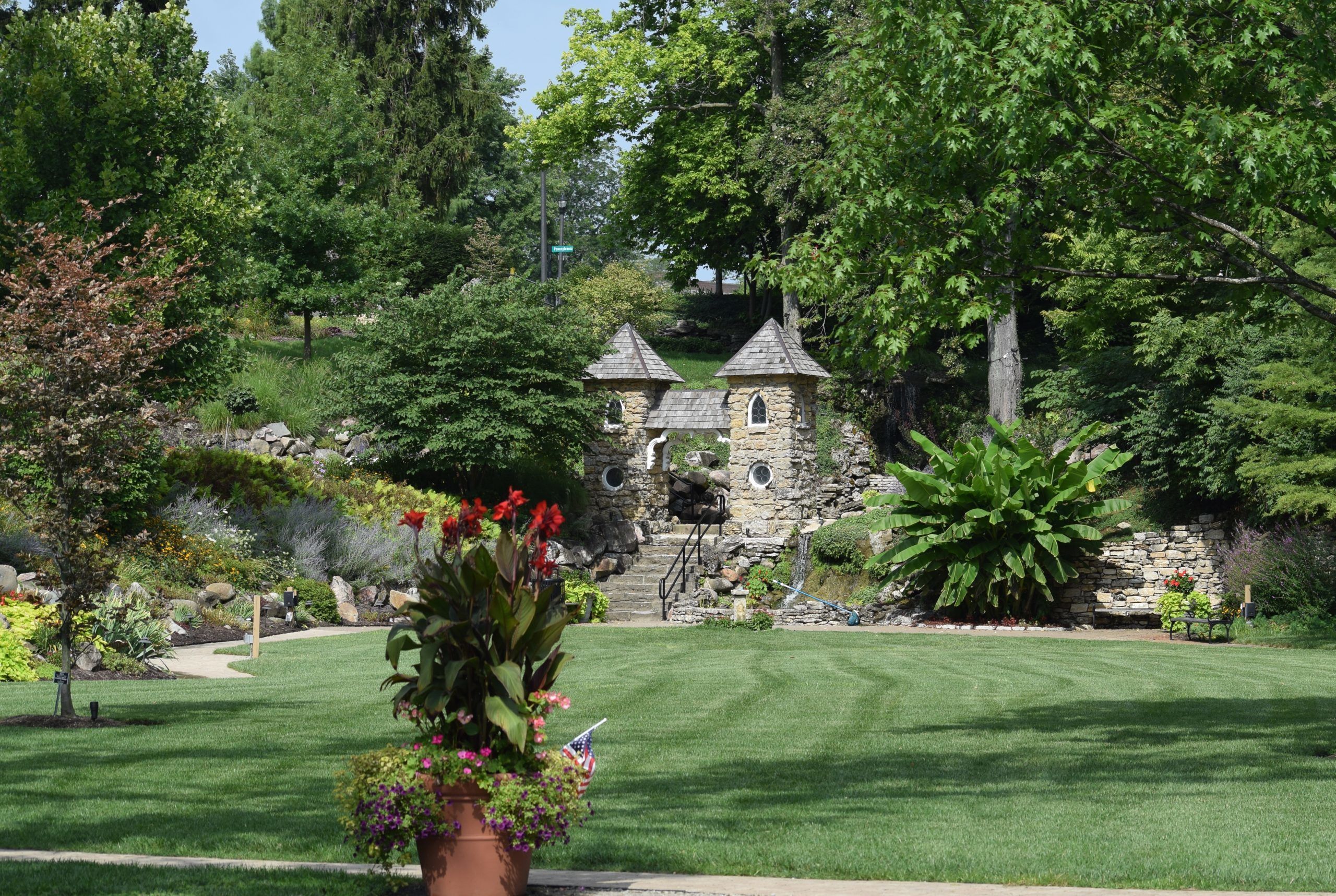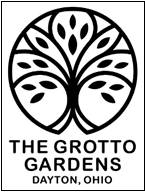
History
During the late 1880s and early 1900s, the Grotto Gardens were a major attraction at the Central Branch of the National Home for Disabled Volunteer Soldiers. Often referred to as the “Dayton Soldiers’ Home”, the facility was built as a refuge and home for disabled soldiers of the American Civil War, and at its peak, sheltered over 7,000 Veterans. The Grotto area and lakes were formed from the quarrying of limestone as building material for some of the Home’s initial structures (such as the Protestant Chapel), walkways and roads.
The Grotto’s water flows from natural underground springs, but the surrounding landscaping, rock walls and nearby lakes are all man-made. Seventy-five full-time Veteran gardeners planted and cared for magnificent gardens in the Grotto and adjacent areas, and it became a destination point for hundreds of thousands of visitors a year. Some came by train and often stayed at a hotel located on the grounds just north of the Grotto.
As the Veteran population at the Home declined during the mid-1900s, the Grotto Gardens fell into disrepair as the site became overgrown and mostly lost from view. Restoration began in 2012, and the next year, the OSU Extension Montgomery County Master Gardeners joined in a combined effort with Dayton VA Medical Center and AVHC to begin the restoration and maintenance of the historic VA Grotto Gardens.
Local garden centers, garden clubs, and donors have been generous in their support of this endeavor. Gardens have been planted and a tree dedication program has been initiated to honor various individuals for their service to our country.
As you tour the Grotto Gardens, you will want to download the Grotto Gardens Walking Tour Brochure. In addition, you will find that many of them have been named after historic figures from the early years of the Central Branch and Gardens. To learn more about some of these pioneers of the Grotto Gardens, download the Pioneers of the Soldiers Home Grotto and Gardens.. Both of these are available to download at the Grotto Gardens Resources tab:
-
1. Frank Mundt Memorial Garden
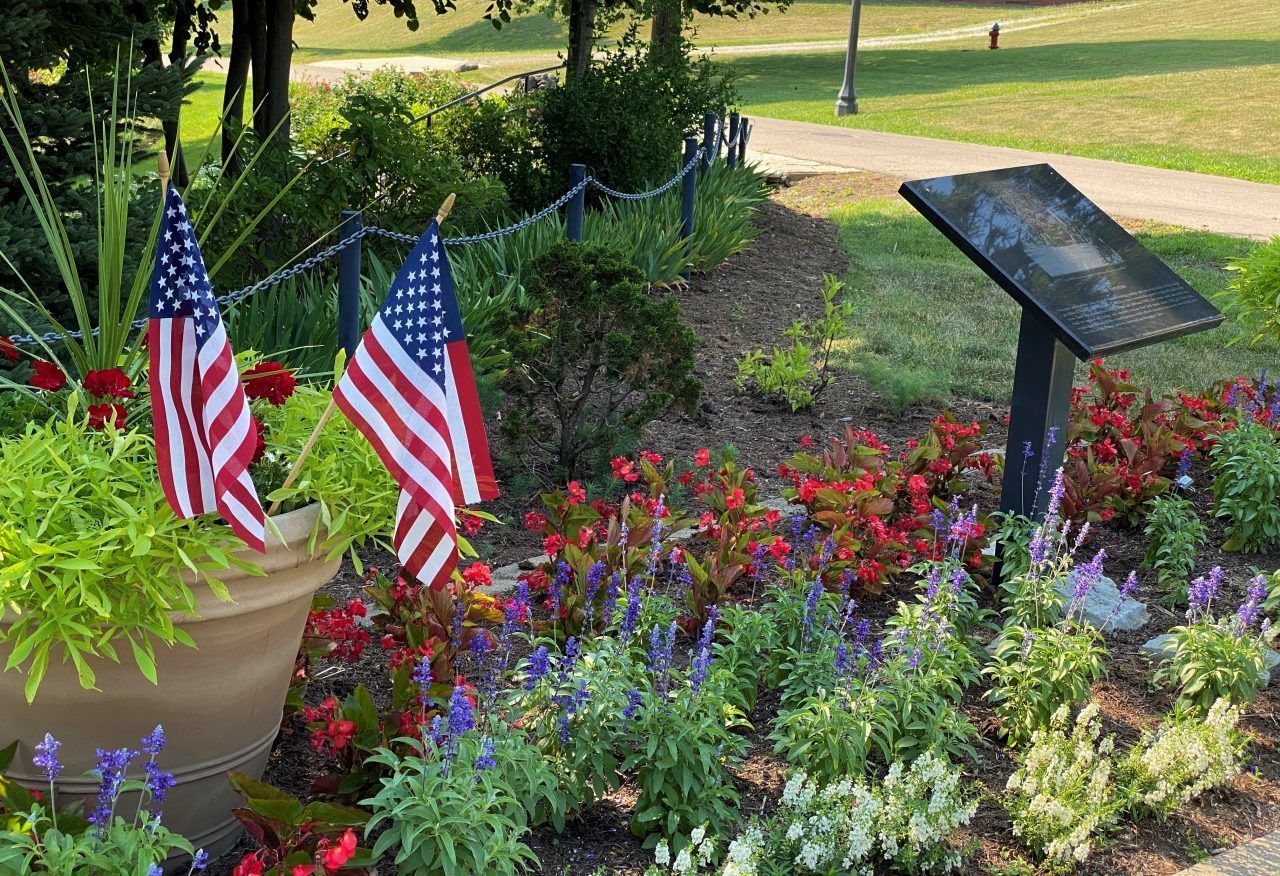
In 1868, Frank Mundt, a resident veteran, and florist by trade, thought the Mother Home would be perfect if it had a garden. Using found and donated plants, he began planting in the site of a former quarry on the east side of the grounds. Through his efforts, he inspired others to develop the Grotto Gardens into a destination attraction for as many as 100,000 visitors a year. The patriotic theme of this garden is intended to attract attention and to inspire individuals to explore, visit and enjoy the newly restored gardens.
-
2. Major Charles Beck Memorial Perennial Garden

Major Charles Beck oversaw the gardens from 1875 to 1906, and was the gardener/landscaper who oversaw the development of the gardens into a major tourist attraction. This is the first garden that was developed in the Grotto restoration and was established by the 2013 OSU Montgomery County Master Gardener Intern Class. When prepping the area for planting. part of an original brick walkway was uncovered, and by the apparent age of the bricks, it was likely constructed during the late 1800s era.
This garden was designed to be seen by residents in buildings across the road. Perennials start blooming in early spring with tulips and daffodils. Alliums provide late spring color. Roses, day lilies, and colorful coneflowers provide summer color.
-
3. Dr. Clarke McDermont Perennial Bed

The Dr. Clarke McDermont Perennial bed is named in honor of the first surgeon of the Dayton National Soldiers Home. When General Cox was elected governor of Ohio, he appointed Dr. McDermont as Surgeon-General of the state, an office that ended at the conclusion of the Civil War. Afterwards, he served continuously at here from 1867 until August 1874; with the exception of fourteen months spent as surgeon at the Southern Home at Hampton, VA. Dr. McDermont died in 1881 and is buried at Woodland Cemetery in Dayton, Ohio.
This garden is exposed to full sun except for the rock wall area. The perennial plants are grown to entice pollinators to visit and feed starting with the early season bulbs, hellebores, forget-me-nots, celandine poppies and candytuft, leading into the late spring roses, yarrows, coreopsis, and hardy geraniums. The summer months showcase Shasta daisies, lavender, coneflowers, agastache, day lilies and butterfly bushes. Gay feathers and goldenrod are joined by asters, mums and stonecrop sedum to finish the growing season.
-
4. Joseph Guy LaPointe, Jr. Purple Heart Garden
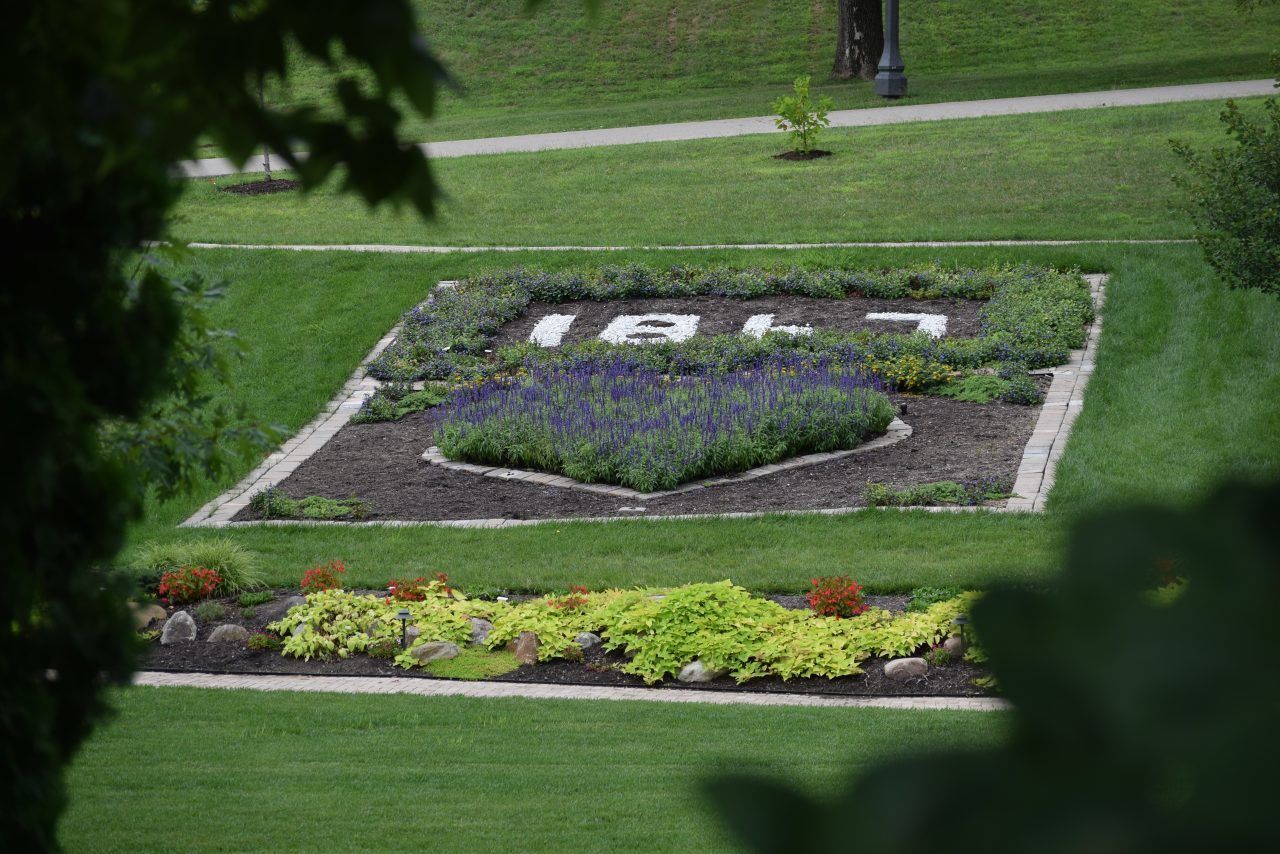
This garden honors Joseph Guy LaPointe, Jr.,. along with other Veterans who have received the Purple Heart medal. As a conscientious objector and a medic, Specialist LaPointe’s unit came under fire in Vietnam; he was killed while shielding two wounded soldiers with his body as he tried to bring them to safety. For his extraordinary bravery, he was awarded the Medal of Honor, the Silver Star, the Bronze Star and the Purple Heart Medal.
The Purple Heart Medal is the oldest military award, established by George Washington in 1782. It was not awarded again for 150 years, being reintroduced on February 22, 1932, on the 200th anniversary of George Washington’s birth. The medal is inscribed, “For Military Merit” and is awarded to those “wounded in as a result of hostile enemy action.”
This garden is in homage to the picture gardens that were a highlight in the Grotto Gardens during its earlier days.
-
5. Elizabeth Rohrer Memorial Butterfly Garden
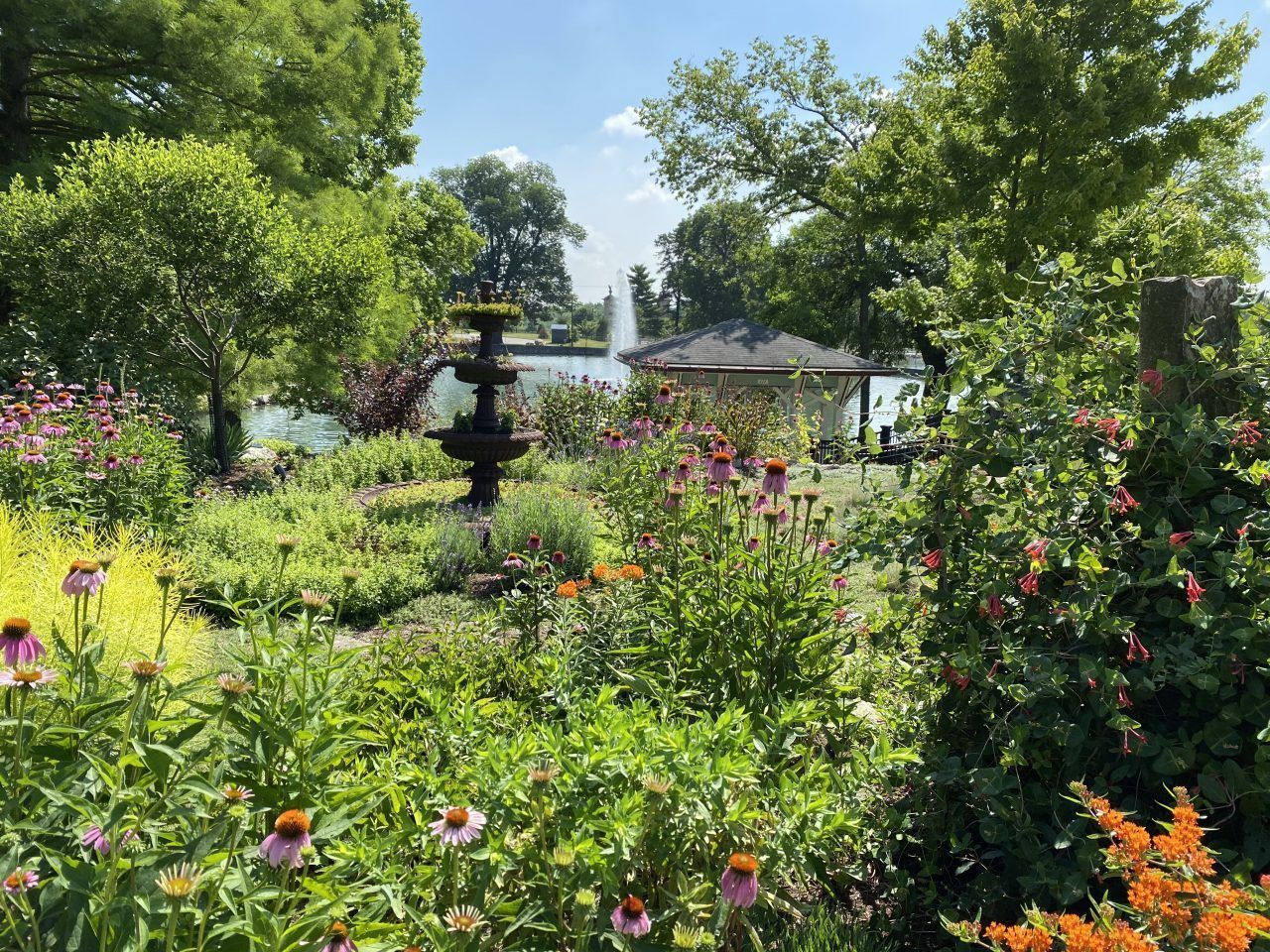
Elizabeth Rohrer of Germantown became interested in the original gardens at the Grotto and contributed large numbers of plants from her own gardens. The base of this garden is the old aviary. A dry rock stream was added to bring a focus to the outcropping on which the garden sits. One of the original Grotto fountains was brought in as a focal point of the Butterfly Garden.
This garden is designed with pollinators in mind using mostly native plants and illustrates what can be done with full sun and dry conditions. A highlight is the native coral honeysuckle growing alongside butterfly weed, cone flowers, and many other nectar plants.
-
6. James B. McPherson Garden

James Birdseye McPherson, born near Clyde, Ohio, was a career United States Army officer. He served as a general in the Union Army during the Civil War. He was killed at the Battle of Atlanta, facing the army of his old West Point classmate, John Bell Hood. He was the 2nd highest ranking Union officer killed in the war. At the height of the Grotto Gardens (19875-1906), a boat used to ferry tourists around the pond was named the McPherson.
The plants in the gardens surrounding the boathouse are selected by their preference for sun or shade. The majority of the plants are flowering annuals that allow for constant blooms late spring through fall. The flowers boast a variety of cheerful colors that are in harmony with the pond and beautiful setting. The gardens are designed to provide a peaceful environment for Veterans and visitors to sit, relax, and enjoy the beauty of nature.
-
9. Chaplain William Earnshaw Rock Garden
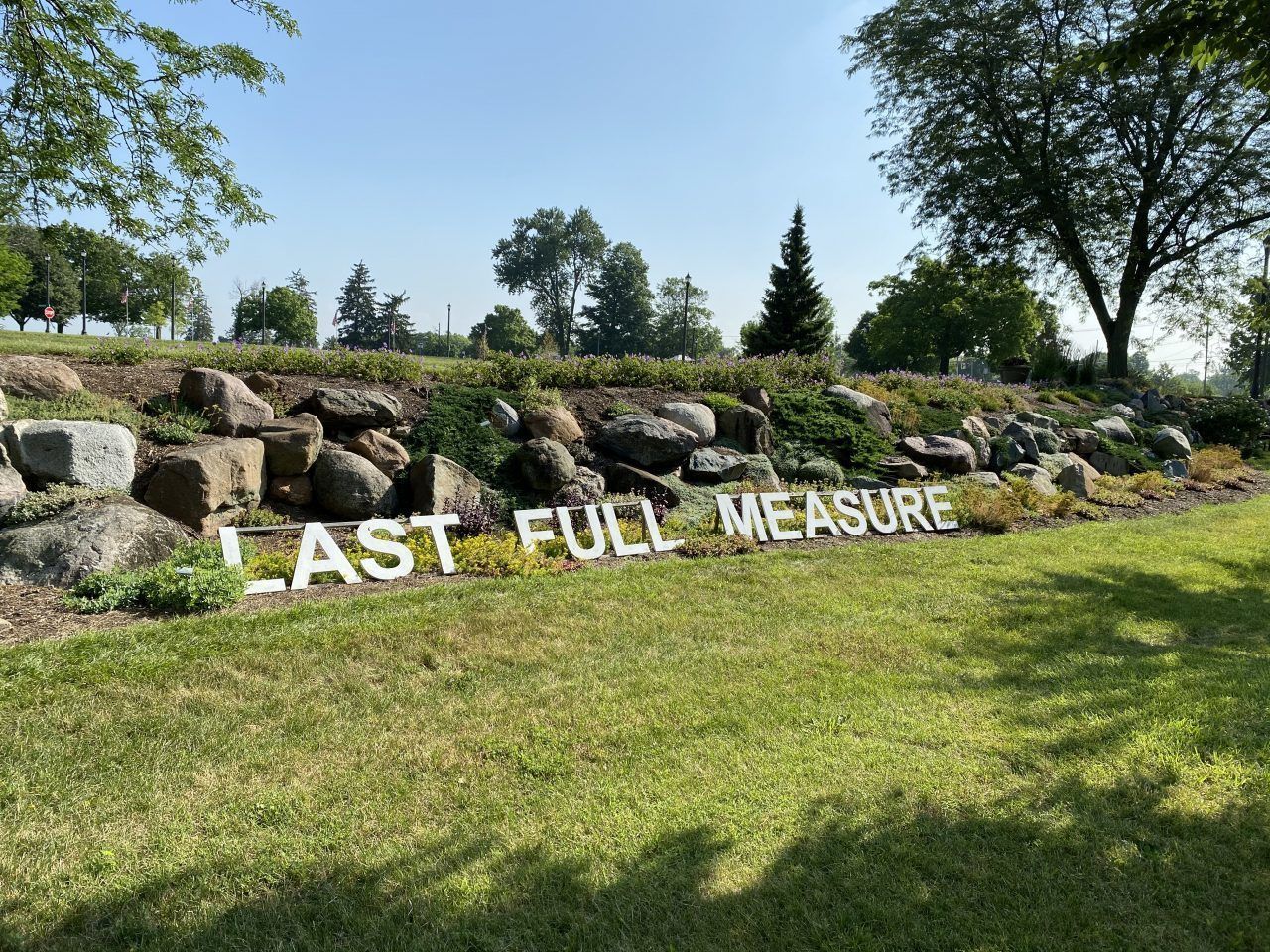
This rock garden is named for Chaplain William Earnshaw. In September 1867, he was appointed chaplain of the National Asylum for Disabled Volunteer Soldiers in Dayton, Ohio. It was under his direction that the Civil War soldiers helped quarry the stone from the rugged eastern edge of the grounds to build a chapel. The cornerstone was laid on November 21, 1868, and the building was dedicated in 1870, making it one of the oldest church buildings in this area. It was the first chapel built for veterans and is now the oldest in government service. Chaplain Earnshaw served as the official librarian of the post; had an important part in one of the earliest examples of veteran rehabilitation; and helped in organizing the school by being one of its original teachers. He died at the age of 54 due to illness and is buried in Woodland Cemetery, Dayton, Ohio. The center of the rock garden is the phrase “Last Full Measure. This phrase appears in Lincoln’s Gettysburg Address: …that from these honored dead we take increased devotion to that cause for which they gave the last full measure of devotion. The chosen phrase is to highlight all our veterans for serving our nation and pays tribute to their services as their last full measure of devotion to protect each of us.
There is no irrigation for this rock garden so there are no annuals in the garden. The amount of sun over the 300 feet of garden ranges from full shade to full sun. As a result, half the garden is designed to handle full sun. That area of the garden is filled with drought tolerant plants including several varieties of sedum and thyme. The other half also contains sedums and some other sun-loving plants but has shade loving plants such as liriope, hostas, pulmonaria and hellebores.
-
10. Charles Harper Garden

Charles Harper was a long-time employee and groundskeeper at the VA Center in the 1980’s. Under his direction, the VA grounds crew did major restoration on the Grotto in the early 1980’s, by shoring up much of the rockwork, clearing weeds and planting flowers. However, due to the funding and personnel challenges of that era, it became difficult to maintain the Grotto in a consistent manner in later years. This garden is dedicated to Charles for his initial efforts in restoring the Grotto to its former glory.
Since many visitors use the parking lot, this garden is the first one they encounter when entering from there. The garden offers color, texture and scents to welcome visitors to the Grotto Gardens.
-
13. Emma Miller Memorial Tranquility Garden
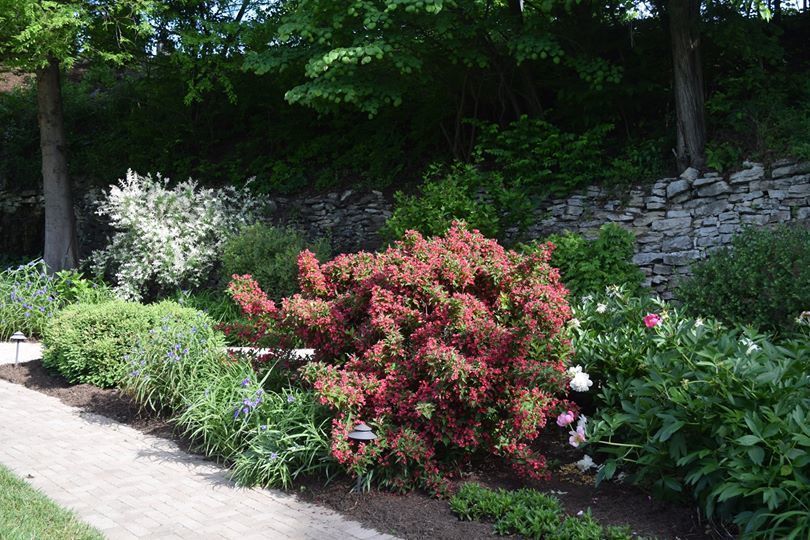
Emma Miller was known as the “little Mother of the Soldiers.” She began caring for soldiers of the Civil War and when the Soldiers Home opened in 1867 she was transferred here. She was to remain working here for almost 50 years. For many years she was the superintendent of the General Depot of the National Home for Disabled Volunteer Soldiers. When she died in 1914, her body was wrapped in an American flag and lay in state in the Protestant Chapel of the Home. Following the service at the church, the body was escorted to the Home cemetery and laid to rest in a grave selected on the officer’s lot. The burial was accompanied with scenes of military pomp such as has honored few women in this country, and only the women of royalty in other countries. The firing of the last salute over the grave by the firing squad and the sounding of taps on the bugle were part of the ceremony. The military character of the funeral lent a special significance to the occasion.
This garden was designed to allow visitors to immerse themselves in the plantings while still getting a view of the overall garden.
-
14. Chaplain Thomas B. Van Horne Memorial Wet Gardens

Thomas Budd Van Horne, a veteran, and chaplain designed the Central Branch (Dayton facility). Van Horne laid out the campus with a grid pattern for streets with the major thoroughfare dividing the barracks from the administrative offices to mimic a small village. The layout created small neighborhoods or sections on the campus. Van Horne designed large parks and open spaces around the streets and buildings. While the administrative buildings were laid out in a grid pattern, the parks and open space had a curvilinear pattern with extensive walking paths and gardens. The natural feel of the gardens and parks provided the veterans with an enjoyable place to spend their time since they could not return to work.
This garden is a micro-climate garden, meaning its soil and growing conditions are different than other areas in the Grotto. The natural underground springs seep water constantly through the limestone rock wall that is the backdrop of the garden and causes a bog-like environment. This is the perfect condition for the magnificent Bald Cypress tree and its “knees” that grace the area.
-
15. Col. Edwin F. Brown Memorial Waterfall & Grotto Gardens
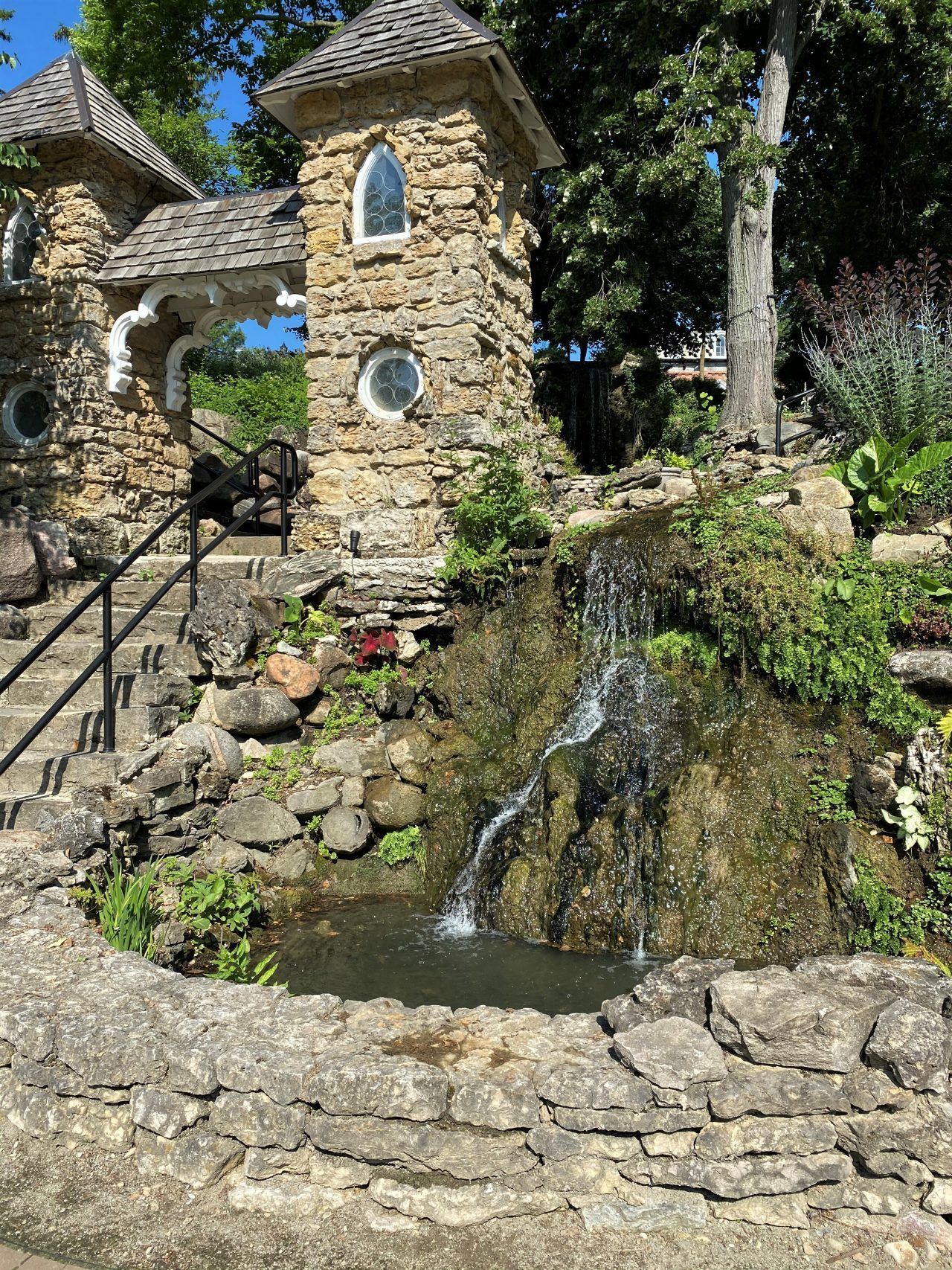
Dedicated to Col. Edwin Brown who was appointed Governor of the Central Branch in 1868. Col. Brown believed in giving employment to the soldiers and paying them for it. If any work was needed, he made inquiry for soldiers to do it. He established workshops of different kinds, and his early experience in the work of building and construction commenced to show itself in the manner in which this unattractive hill was changed to the beautiful spot which it now is.In 1879, he was made Inspector General of all National homes. He served in this capacity 22 years until his death.
The garden includes a hardy banana tree and some tropical plants that were typical in the early days along with shade loving plants in the upper grotto area.
-
16. WWII Memorial Overlook Gar
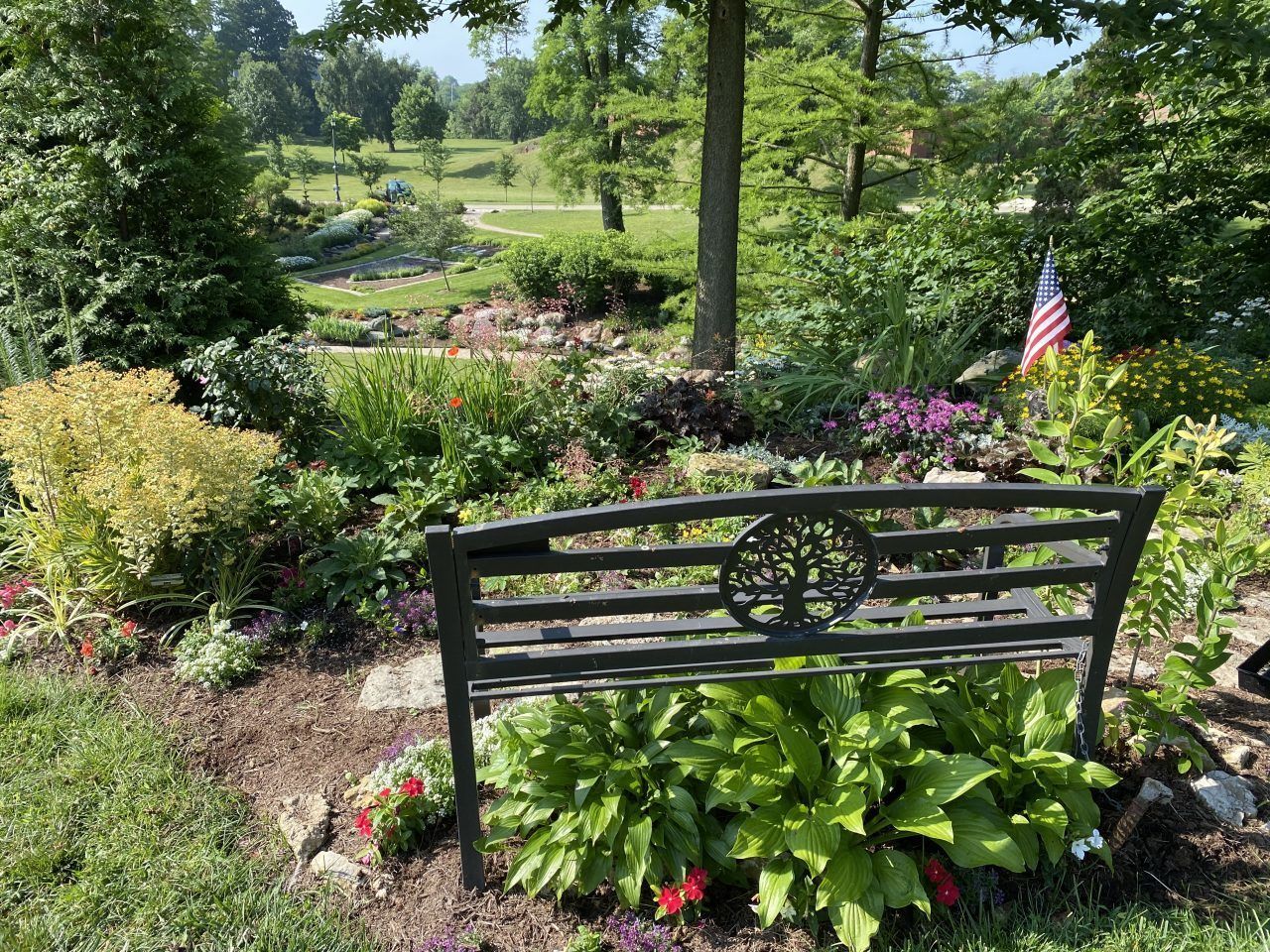
Dedicated to all veterans who served in WWII. The WWII garden is an overlook garden with a magnificent view of the Purple Heart garden as well as the great lawn and Swan House
It must be noted that this garden has many plants with silver foliage, used to light up the garden and enhance the many colorful flowers in bloom, We have several ground covers that might entice people due to their brilliant gold\yellow color that simply light up the shady areas of the garden like rays of the sun. Most unusual and fantastical!! Large stones/rocks have been added to the flower bed to create a rock garden effect that adds excitement and contrast to the multitude of various plant textures and colors.
Other Features at the Grotto Gardens
Additional Garden Spaces
The Grotto Gardens include a number of additional garden spaces including the hillside garden, the lakeside pollinator garden and the spillway rain gardens.
-
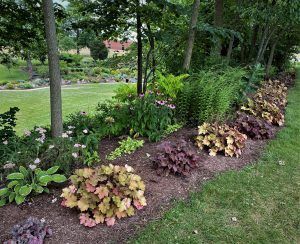
The hillside above the stone wall and adjacent to the C.B. Davis Memorial Monument Boulder Garden is designed as a naturalized area requiring low maintenance on a dry shady slope. The focus is on hardy natives, interspersed with non-natives for added color and variety. Among the native choices are sumac, viburnum, ninebark, oakleaf hydrangea, prickly pear cactus, ginger, sedum, pawpaw, redbud and pollinator perennials. The focus of the flatter upper area of the garden is on higher maintenance perennials and bulbs edged with a structured border of that is readily visible from the sidewalk and road.
-
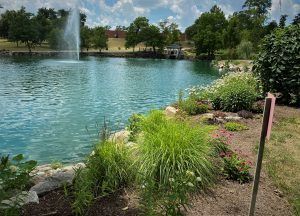
The lakeside pollinator garden includes monarch host and nectar plants. The entire Grotto Gardens has been designated a Monarch Way Station. In addition this garden space includes three weeping redbud trees which are a must see in the spring.
-
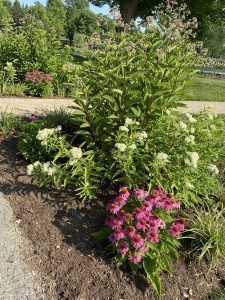
The spillway rain gardens were designed to capture the runoff from the nearby road. They have native plants that can take both wet and dry conditions.
-

-
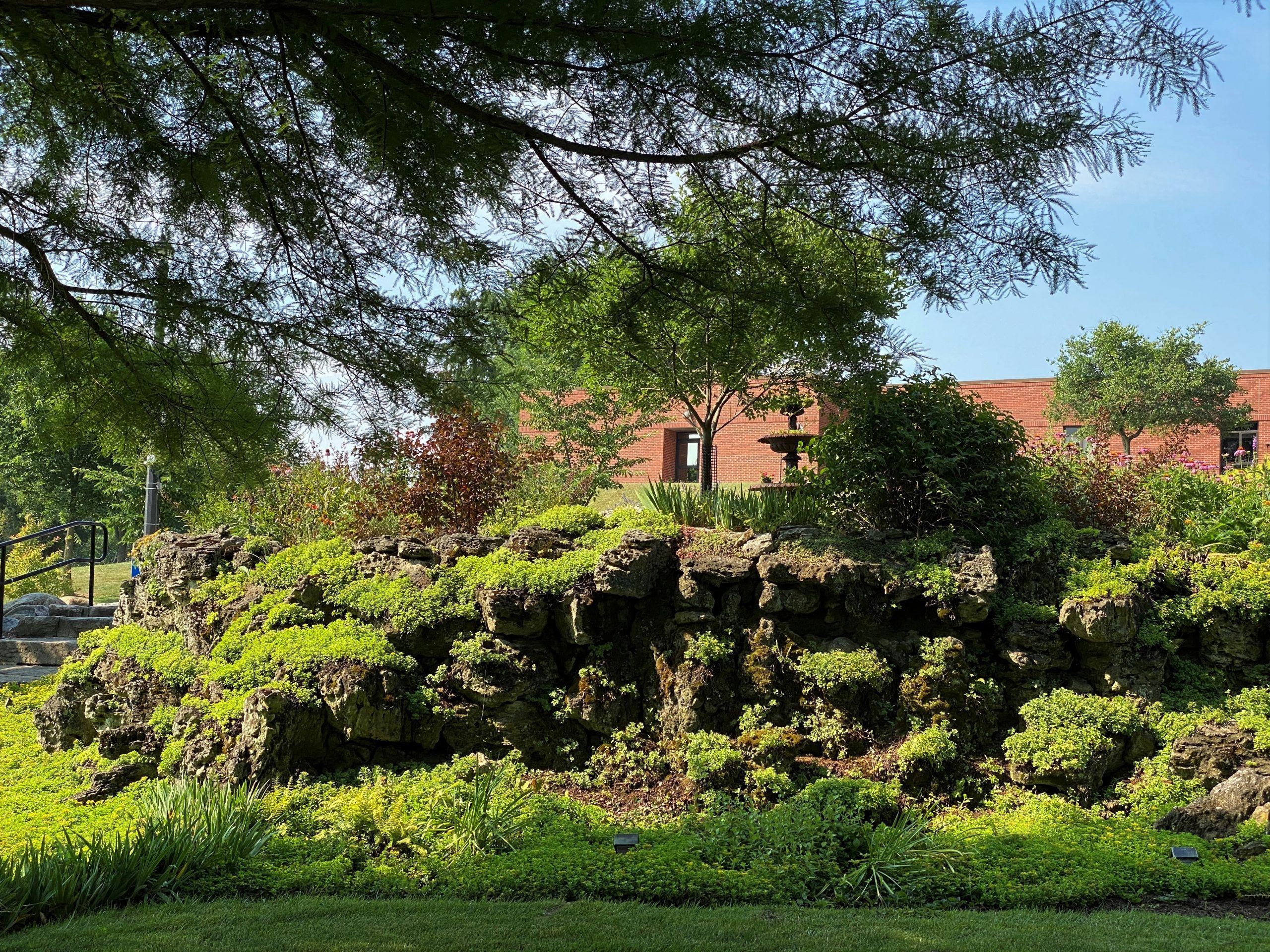
-
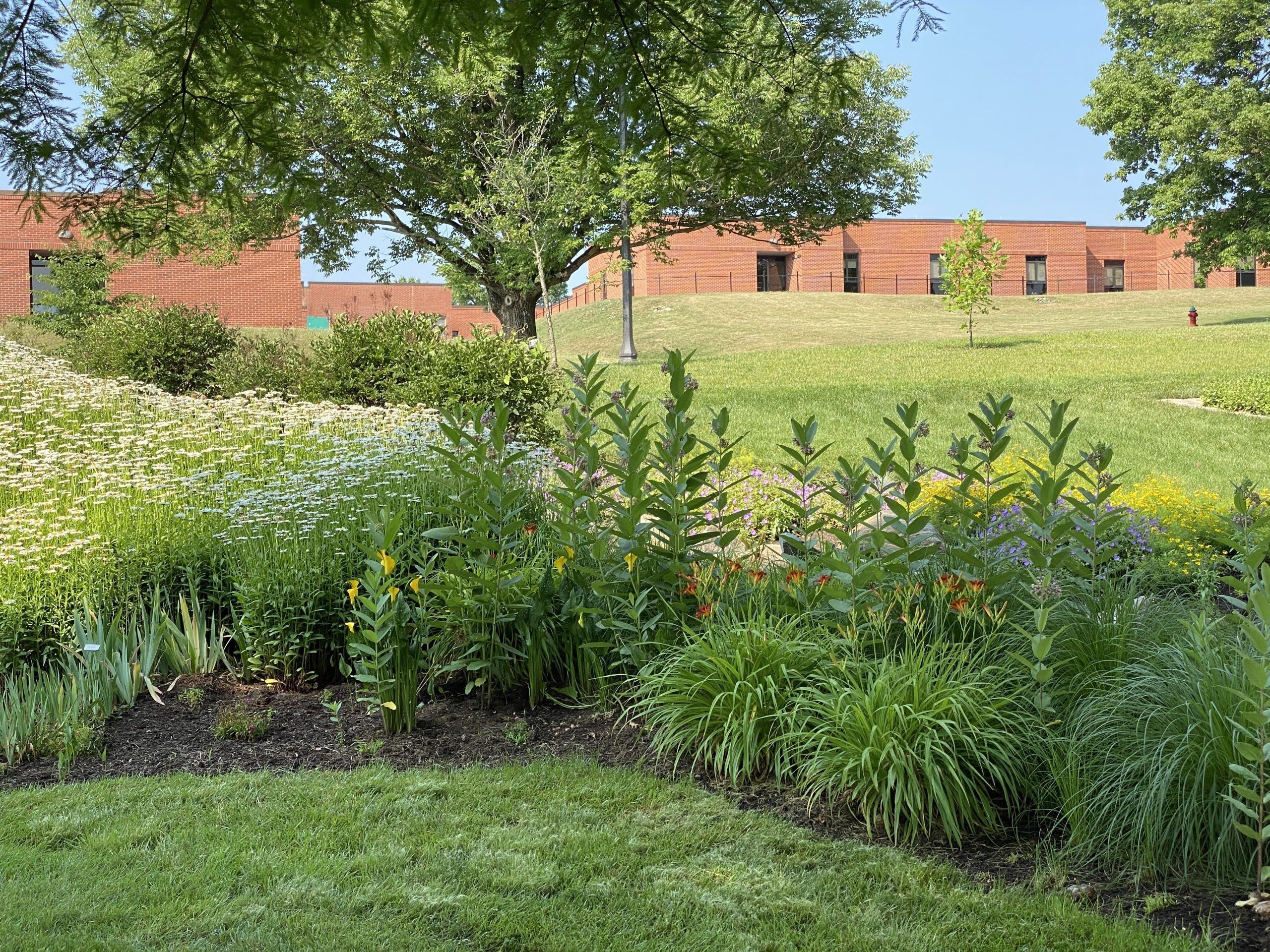
Additional Monuments
WWI monument and Garden.
This monument is dedicated to World War l vets. It was re-dedicated on Veteran’s Day 2018, the centennial year of the end of WWl, with a ceremony. A new plaque was placed by the Miami Valley Military History Museum owners and curators. Red flowers are planted to symbolize the red poppies of Flander’s Field.
The Ponds and Fountain
Originally, the “lakes” kept a miniature version of the man-of -war ship the Garfield anchored there, and a central fountain was at the center of the large pond. There was also an aviary, a deer park, and alligators in one of the adjacent ponds!
Fountains similar to those from the past have been installed in both the upper and lower ponds. Landscape lighting has been used to enhance key features of the Grotto. Check it out after the sun sets – it is a sight to behold. (Night photos by Kevin L. Myers)

